
Struggling to choose between part-time and full-time trading? Then this article is for you!
2023-04-03 • Updated
Position trading is a type of trading that suits for super-patient, witty and long-sighted traders, who have a real feel for the markets. Their primary goal is to benefit from the dominant trends rather than from short-term market fluctuations. Typically, they use fundamental analysis for their trades, but sometimes they need to refer to technical tools as well. And one more key characteristic that defines position traders – they have sizable accounts to trade with.
In the following article, we are going to explore the strategies that encapsulate the two aspects of position trading mentioned above – swap and commodity correlations.
For example, we have decided to trade CAD/JPY currency pair.
Canada is one of the world’s largest oil-producing nations; it is a well-known exporter of this commodity. So, the Canadian dollar normally rises when oil prices go up. In contrast, Japan is considered to be a net oil importer. This causes the yen to weaken when oil prices gain. This situation makes oil prices dynamic a leading indicator for the movement of CAD/JPY currency pair.
Strategy concept:
Timeframe – daily
Long trade’s setup:
Example:
On the daily chart of WTI, we identified an uptrend and were looking for a breakout of it. The candlestick which closed above the trend line occurred on January 3. After that, on January 4, we opened a long position for CAD/JPY at the opening price of a candlestick at 79.79. We placed a stop loss at the previous support level at 78.91 and take profit at 81.8.
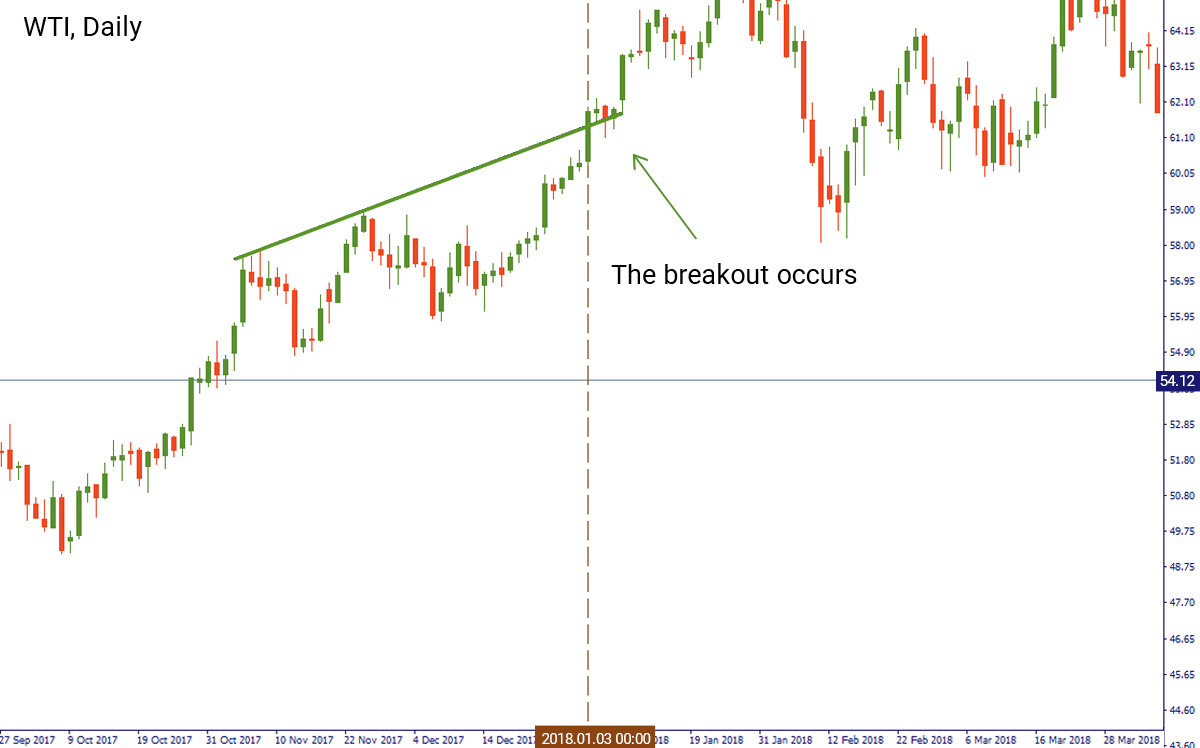
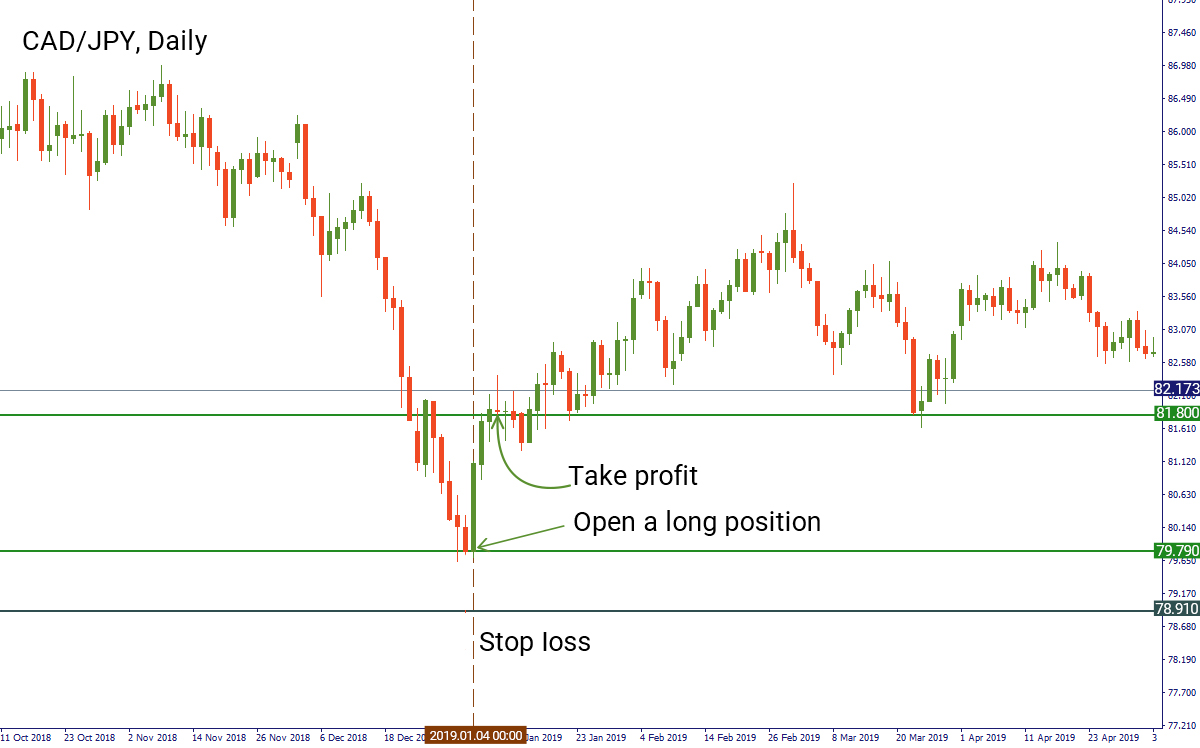
Short trade’s setup
Example:
On the daily chart of WTI the price of crude has been consolidating above the support level at $50.57. We waited for a breakout of this level, which happened on December 17. After that, we switched to the chart of CAD/JPY. We placed a short order at the opening price of the candlestick on December 18 at $84.14. The stop loss for this position will be situated at $85.27, while the take profit goes at $82.7.
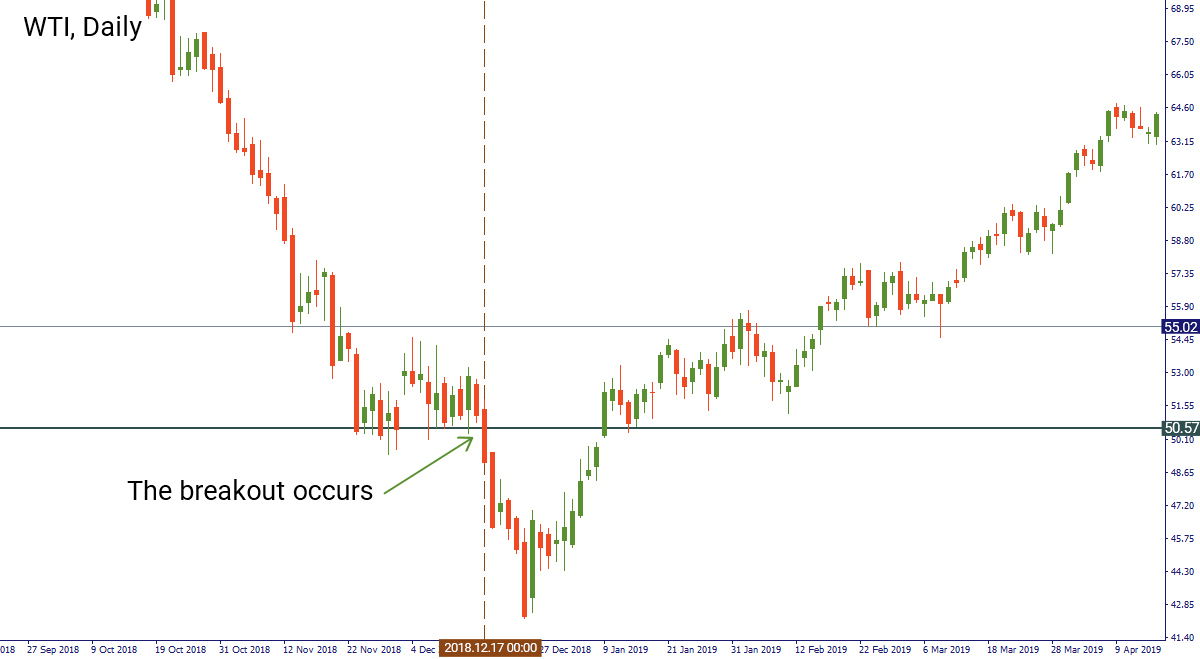
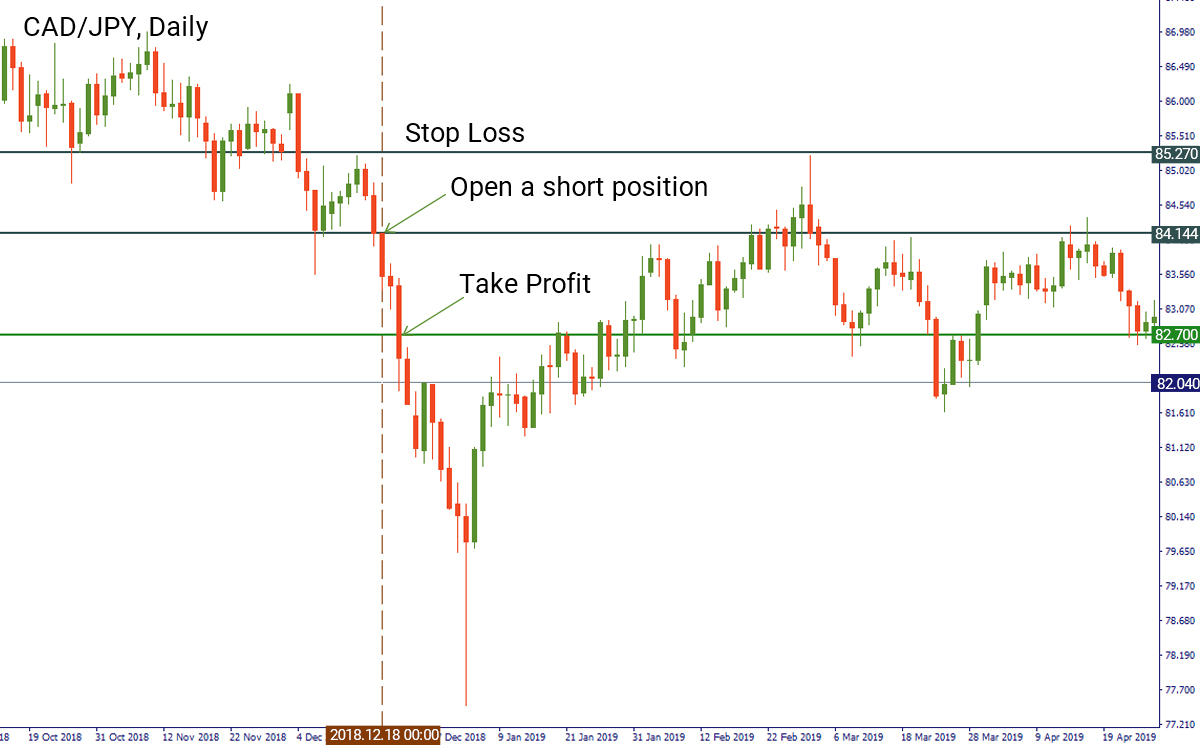
The strategy that we are going to describe here explains the negative correlation between the US dollar index (the index measuring the value of the USD relative to the value of a basket of major currencies) and the price of gold. As a rule, the US dollar index falls, when gold rises.
Strategy concept:
Timeframe – daily
Long trade’s setup:
Example:
On the daily chart of the US dollar index, we noticed the breakout of the 95.66 support on January 7. After that, we opened the chart of gold and entered a long position at $1,285 on January 8. We placed the stop loss at the previous support level at $1,273. The take profit level will lie at $1,299 (a little bit below the resistance level).
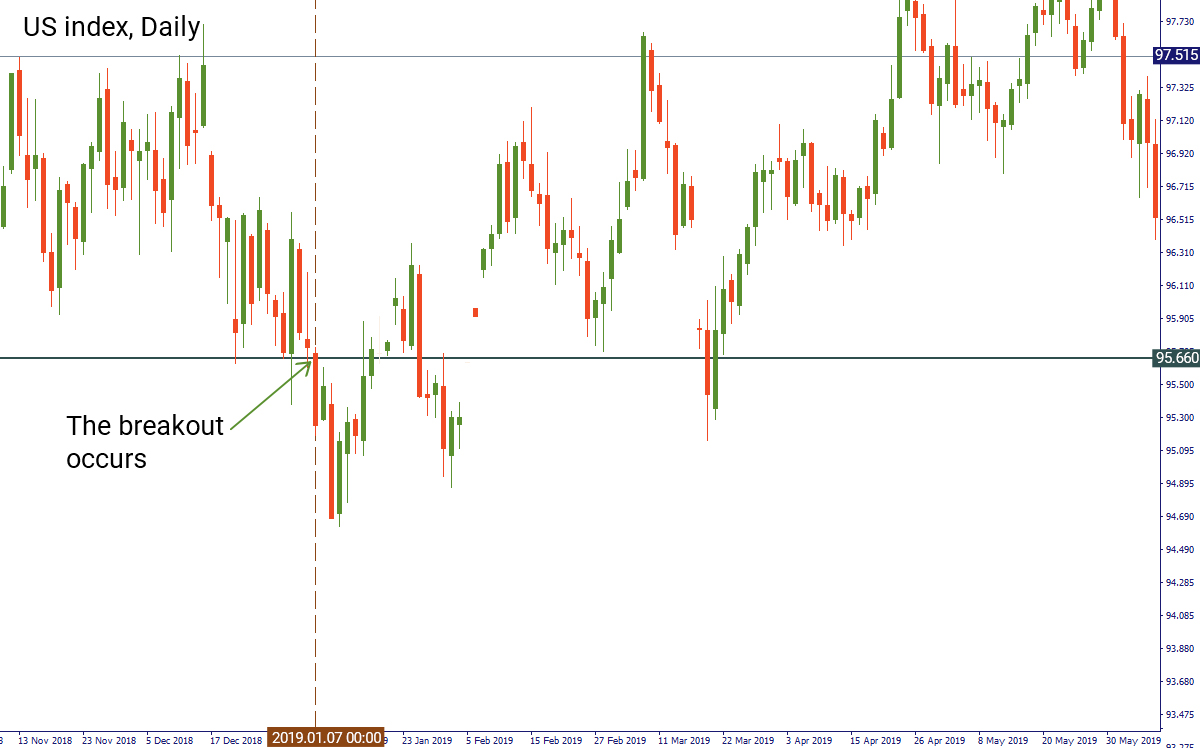
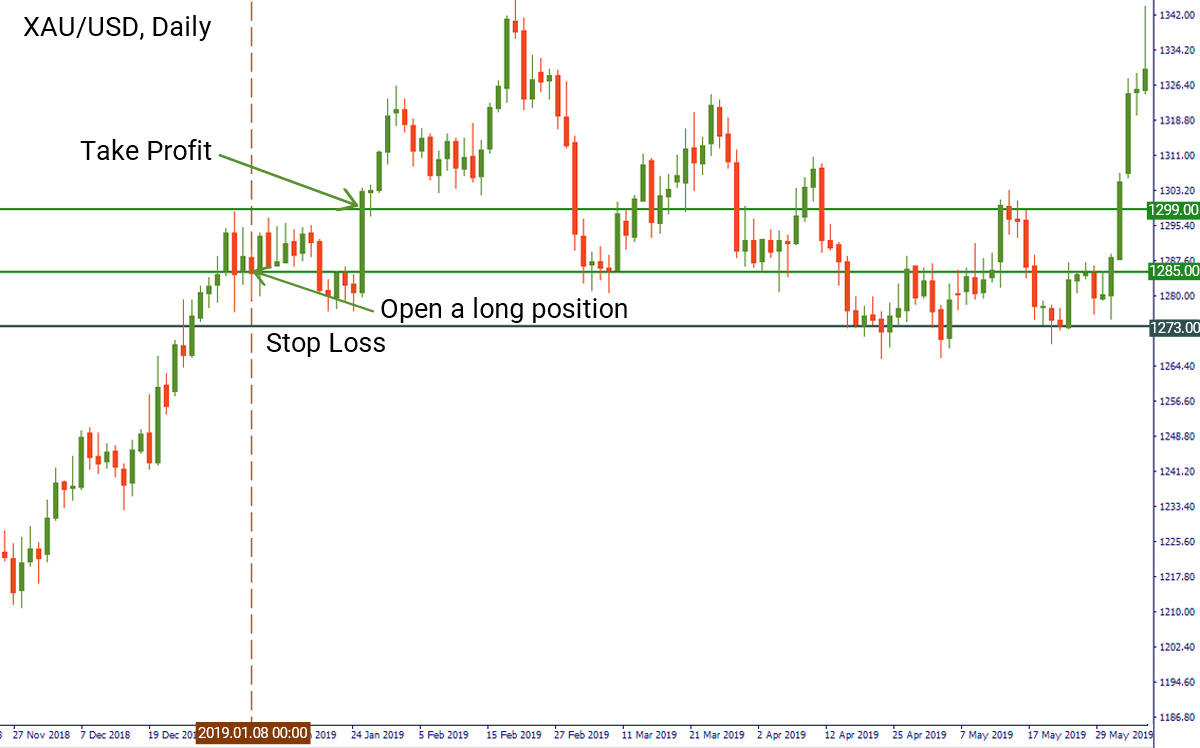
Short trade’s setup:
Example:
The situation when you need to open a short position is similar to the scenario with a long one. On August 10 (Friday), we identified a breakout of the resistance on the daily chart of the US dollar index. We switched to the chart of XAU/USD and entered a short position at the opening price of the candlestick on August 13 (Monday) at $1,211. We put the stop loss above the first resistance level before entry at $1,220. The level of take profit will lie at $1,198 (close to the support level).
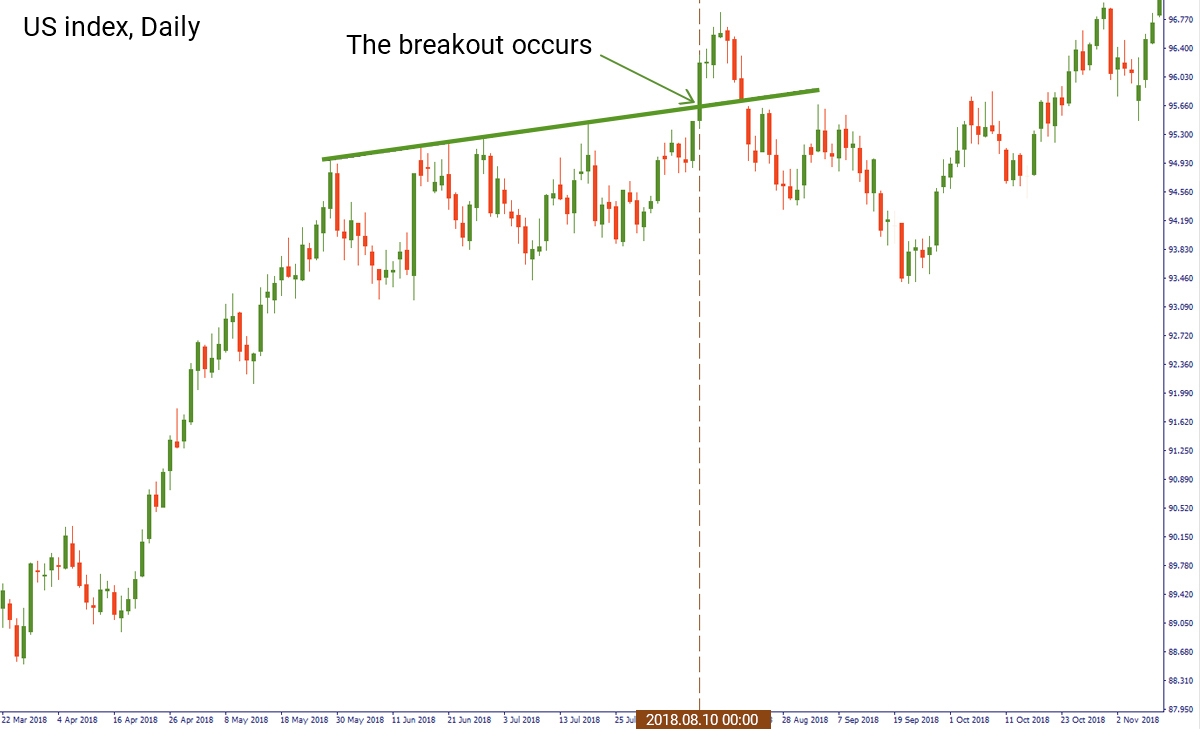
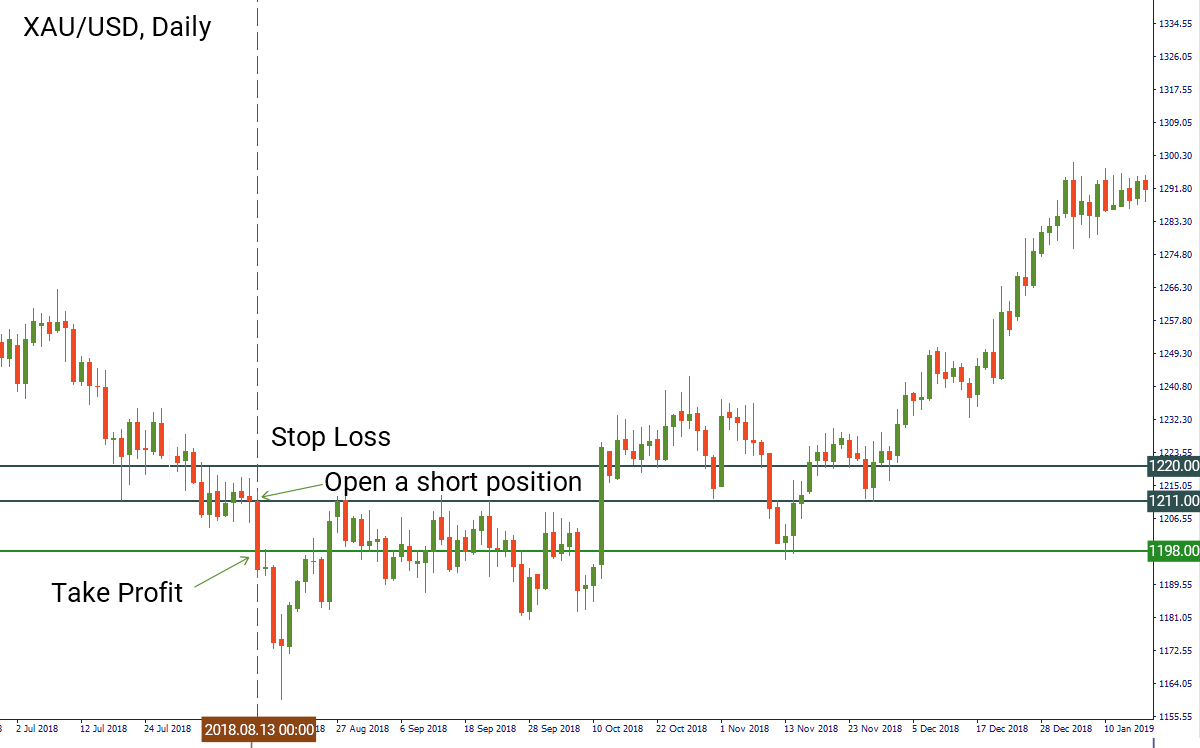
Understanding correlations and fundamental analysis makes it easier for a position trader to catch the market’s movement and open a position at the right moment.
Source: The strategies retrieved from the book of "17 Proven Currency Trading Strategies" by Mario Sant Singh.

Struggling to choose between part-time and full-time trading? Then this article is for you!

In trading, we can rely on a bunch of different entry signals.

A triangle chart pattern is a consolidation pattern that involves an asset price moving within a gradually narrowing range.
If you are 18+ years old, you can join FBS and begin your FX journey. To trade, you need a brokerage account and sufficient knowledge on how assets behave in the financial markets. Start with studying the basics with our free educational materials and creating an FBS account. You may want to test the environment with virtual money with a Demo account. Once you are ready, enter the real market and trade to succeed.
Click the 'Open account' button on our website and proceed to the Trader Area. Before you can start trading, pass a profile verification. Confirm your email and phone number, get your ID verified. This procedure guarantees the safety of your funds and identity. Once you are done with all the checks, go to the preferred trading platform, and start trading.
The procedure is very straightforward. Go to the Withdrawal page on the website or the Finances section of the FBS Trader Area and access Withdrawal. You can get the earned money via the same payment system that you used for depositing. In case you funded the account via various methods, withdraw your profit via the same methods in the ratio according to the deposited sums.
FBS maintains a record of your data to run this website. By pressing the “Accept” button, you agree to our Privacy policy.
Your request is accepted.
A manager will call you shortly.
Next callback request for this phone number
will be available in
If you have an urgent issue please contact us via
Live chat
Internal error. Please try again later
Don’t waste your time – keep track of how NFP affects the US dollar and profit!
